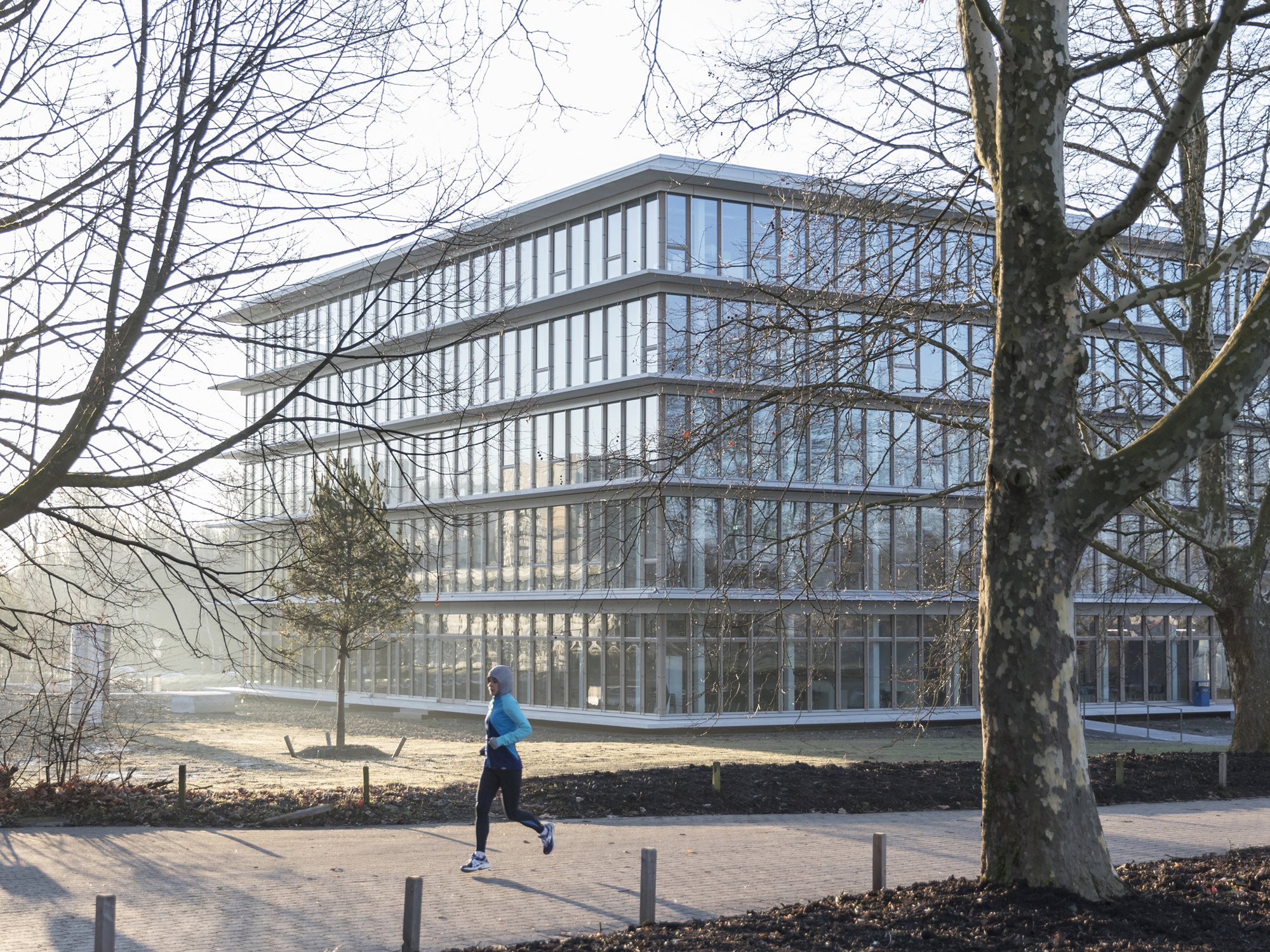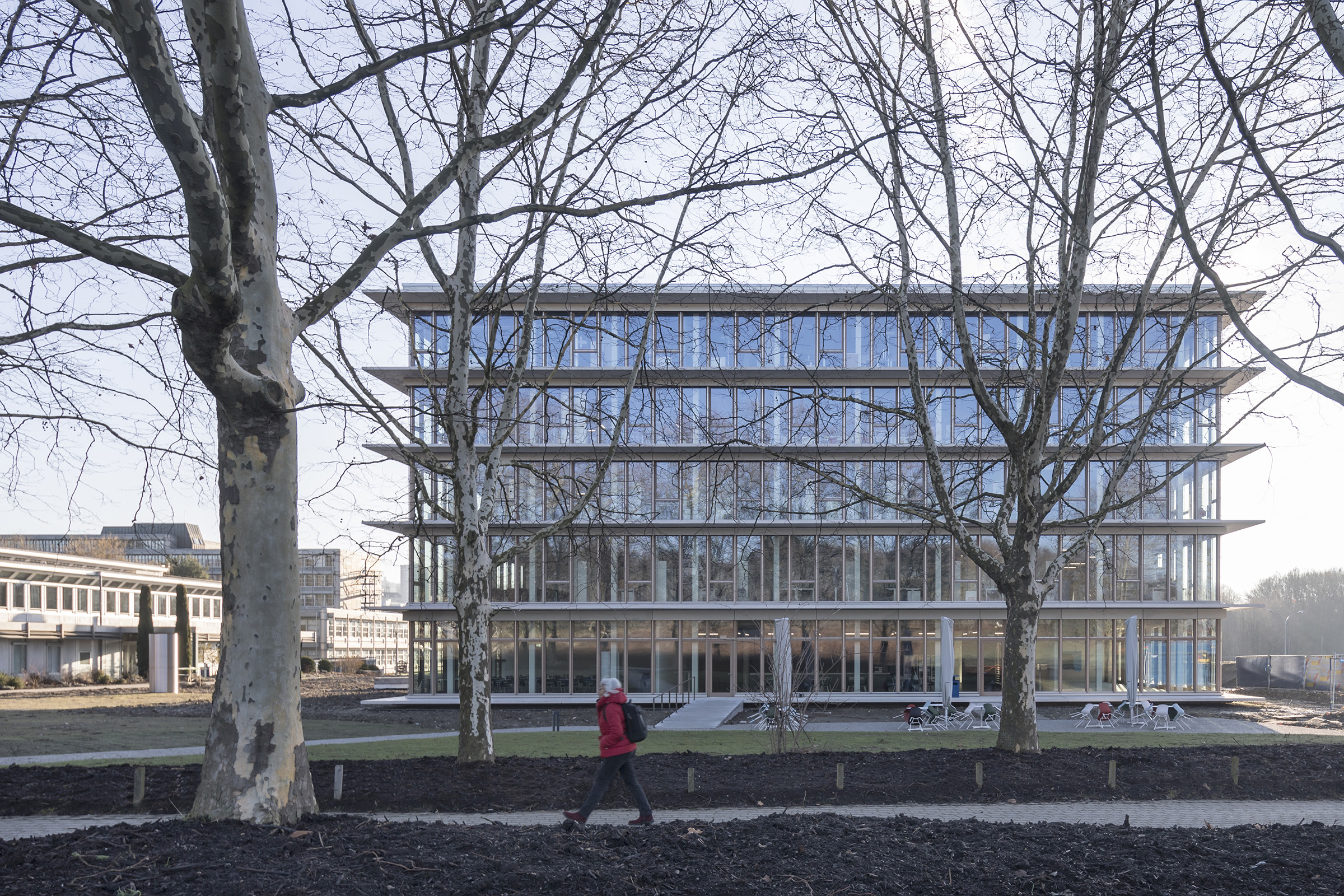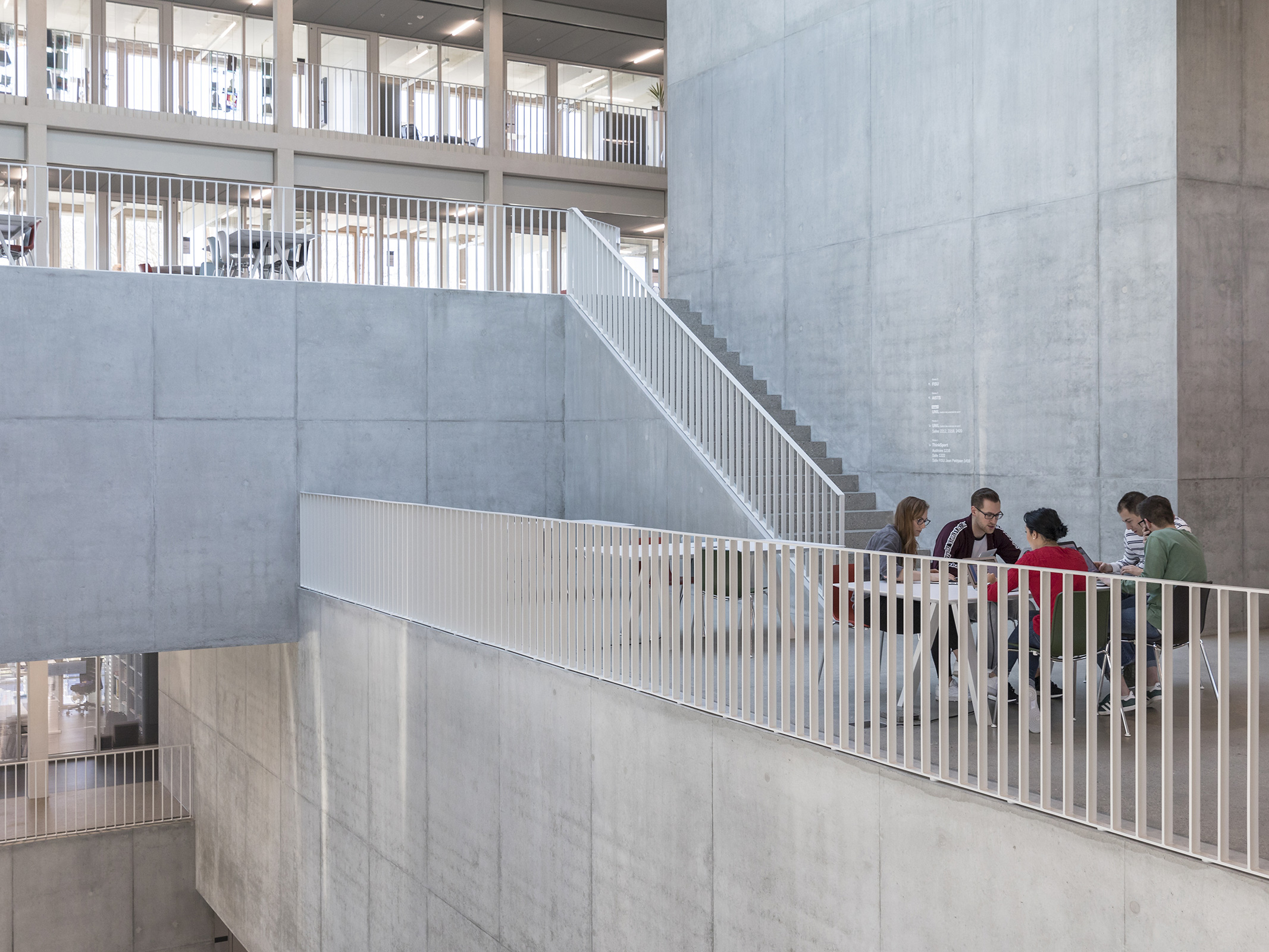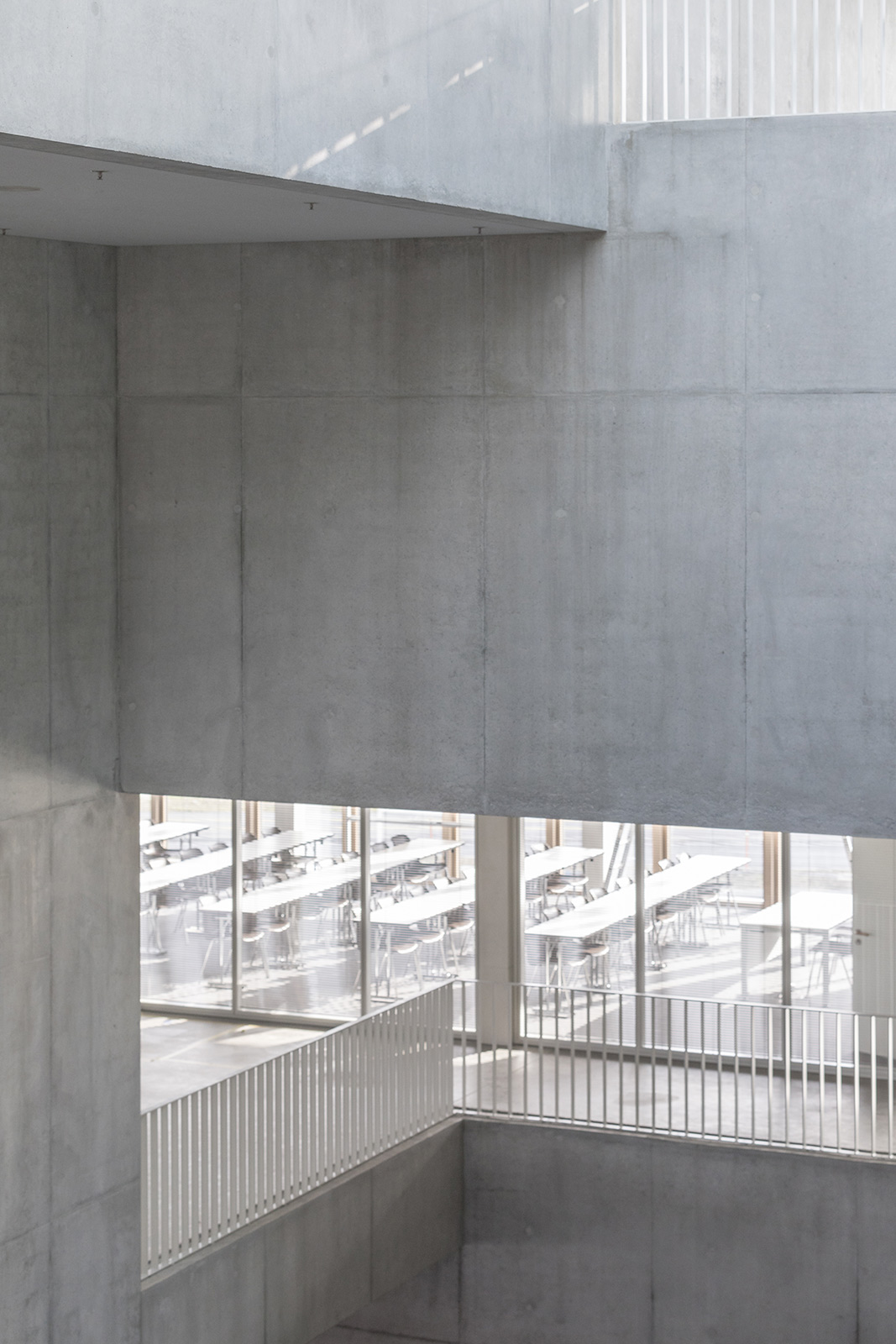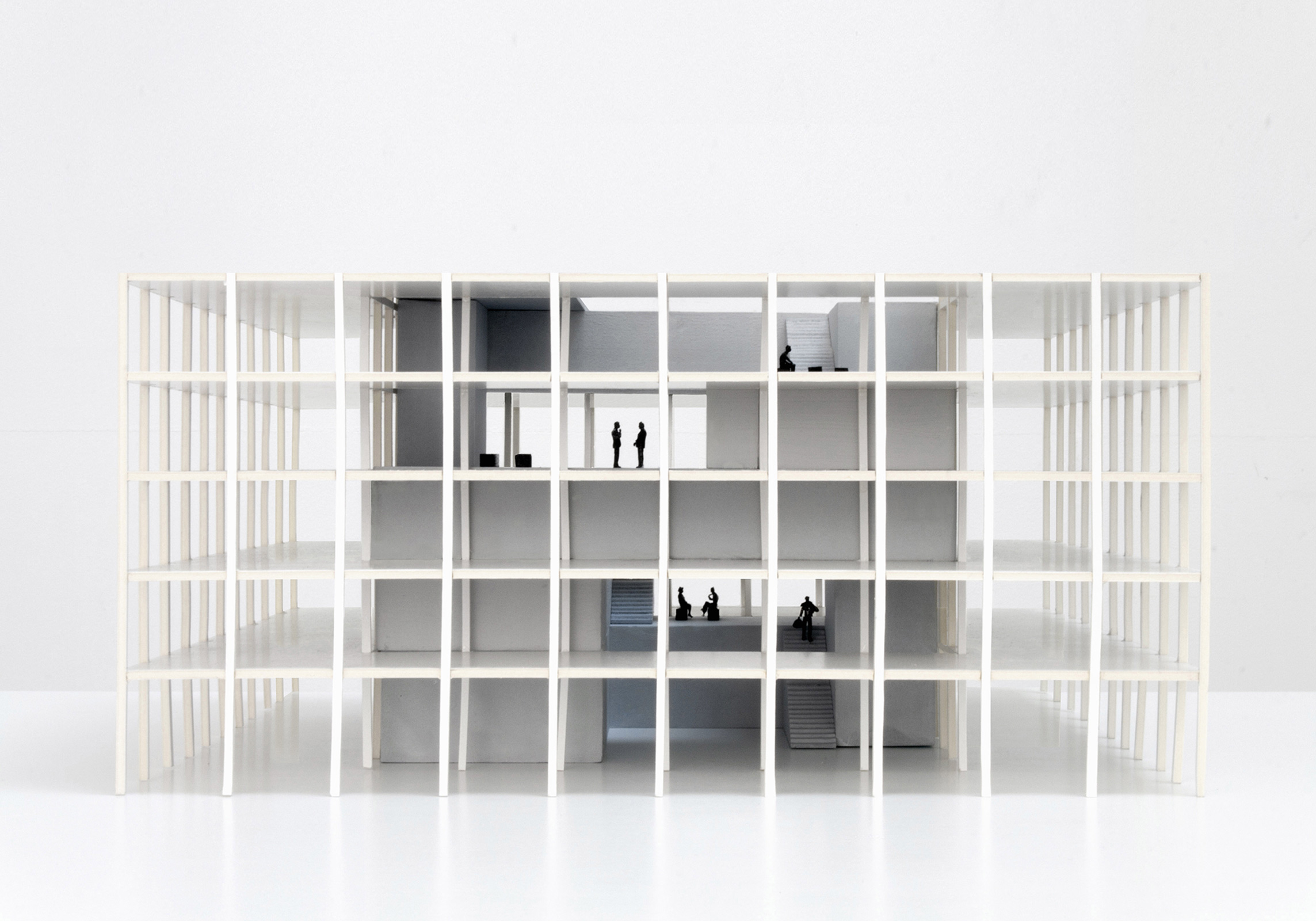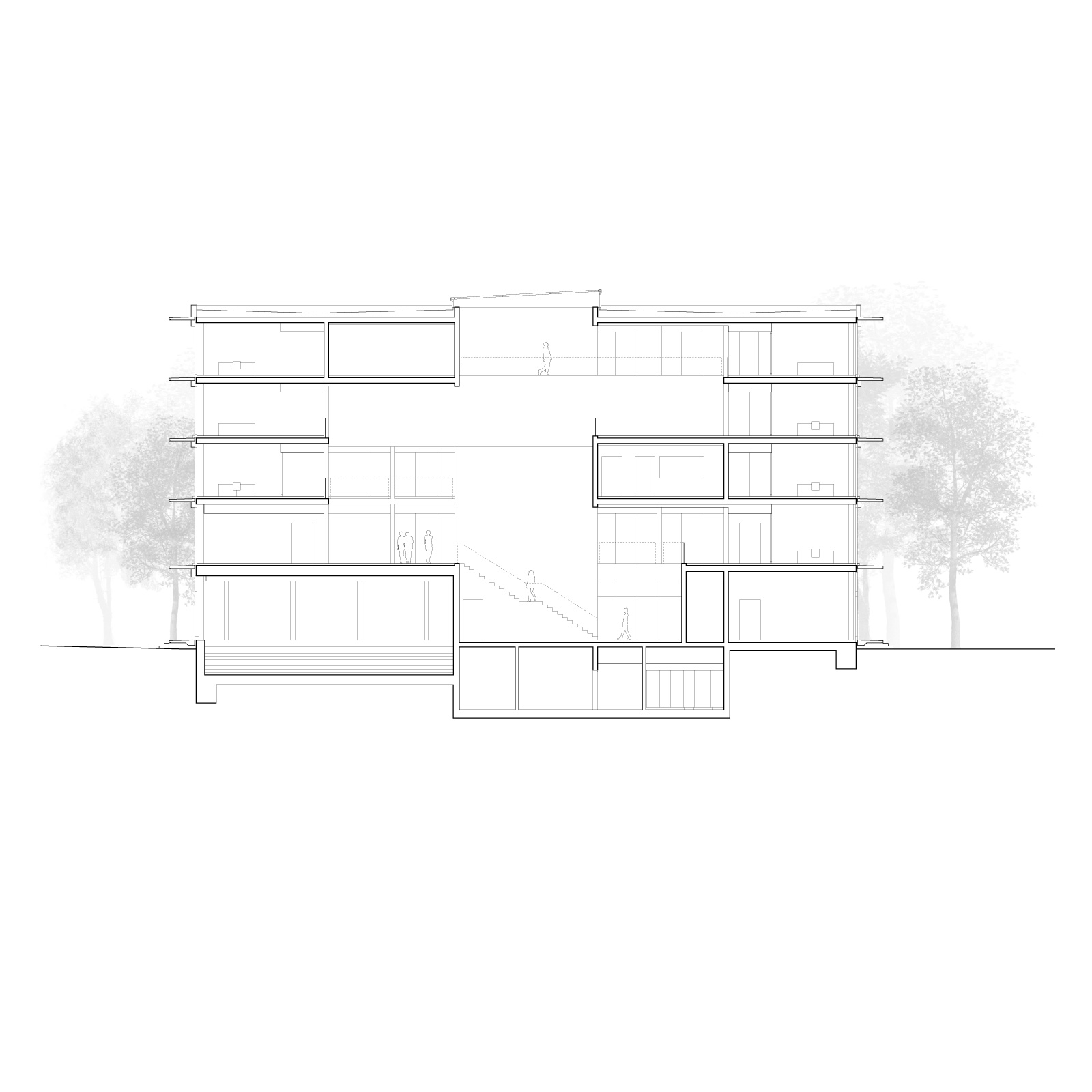| Project | International Sports Sciences Institute, University of Lausanne |
| Year | 2013 - 2018 |
| Location | Lausanne |
| Program | Administrative |
| Type of Procurement | Open Competition, 1st Prize |
| Status | Built |
| Client | Canton of Vaud |
| Size | 6'755 m2 |
| Cost | CHF 28.5 Mio. |
| Team | Jeannette Kuo, Ünal Karamuk, Flavia Sutter (project leader), Andreas Papadantonakis, Catarina Bello, Brian Jordan, Philipp Grossenbacher, Samuel Dautheville, Alexandre Lebet, Adrien Comte |
| Consultants | Construction Management: Pragma Partenaires |
Situated on the campus of the University of Lausanne, the new Institute would unite four different entities researching and promoting the Sports Sciences under one roof: the University of Lausanne’s Sports Sciences Institute, the International Academy for the Science and Technology of Sports, the International Federation of University Sports, and ThinkSport.
A compact, almost cube-like building, it marks a clear presence along the Route Cantonale, overlooking the athletic grounds along the lake shore, while leaving as much of the site untouched as possible and allowing for two generous outdoor spaces – an esplanade at the main entrance and a terrace for the cafeteria.
Programmatically, the project consists mainly of individual and shared offices, meeting rooms, physical testing labs, classrooms and larger common spaces such as an auditorium and cafeteria. The competition brief presented two main challenges: how to unite four different organizations, each with their own sets of needs, into a single building with a collective identity; and how to design a building of representational character and ecological ambitions on an extremely tight budget.
The project is conceived as two interdependent systems, a hyper-rational ring of workspaces, flexible and lightweight; and a porous mass of service and collective spaces that serves as the structural bracing. The outer ring adopts the conventions of the office grid based on a modular façade, addressing the wide range of work spaces demanded in the brief and allowing for future reconfiguration. The separation of the offices and collective spaces into these two parts not only enhances the performance of each but also generates a richer spatial experience. When designing office buildings that are 35-40m in depth, the typical response is to either fill the dark center with a massive core or to make a void. In both cases the experience is quite sober and expected. The project confronts the problem of this center with a third alternative: imagining it as both the infrastructural core as well as the collective experience.
Photography: Laurian Ghinitoiu
